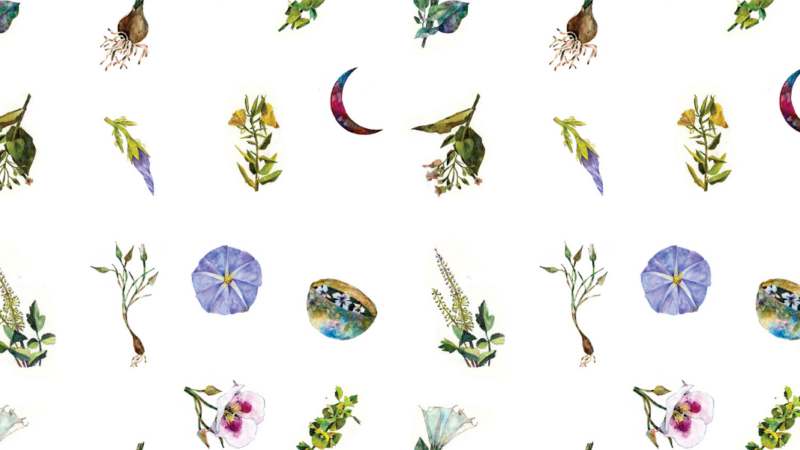The Compassionate Brain – a free online video series!
Dear friends, we want to make sure you are aware of a truly wonderful free, online video series that we’ve put together here at Sounds True, in cooperation with our dear friend Dr. Rick Hanson, who serves as the host for the series. In each episode, Dr. Hanson is joined by a world-class scholar/teacher, including Richie Davidson, Dan Siegel, Tara Brach, Dacher Keltner, Kelly McGonigal, Kristin Neff, and Jean Houston, where they discuss different ways to use the power of neuroplasticity—how the mind can change the brain to transform the mind—to open the heart, build courage, find compassion, forgive oneself and others, and heal the world.
Watch or download the entire series here.
Here, Dr. Rick Hanson introduces the series and what you can expect. Over 30,000 people from around the world have registered for this groundbreaking series; we look forward to sharing these profound discoveries with you.
The Remedy We Are Excited To Try in the New Year: Flower Essences
What are flower essences?
The goals of flower essence therapy include: ease in accessing higher vibratory states like joy and gratitude; enhanced mind-body-spirit balance, presence, acceptance of emotions and integration of difficult vibratory states; encouraging flow states like creativity; manifesting; supporting balance; expanding awareness of self and the Universe, ancestral connection and healing; and helping us to be of greater service to ourselves, others, and the Earth.
Flower essences work by way of the following:
- synchronicities—helping us connect seemingly unrelated or previously unseen opportunities or happenings
- indirect occurrences—positively affecting different environments and interpersonal dynamics
- insights—supporting mental, emotional, physical, and/or astral awakening; new ideas, solutions, or information may present
- physical changes—bringing up new sensations, shifts in organ/system functioning or in symptoms
- emotional responses—bringing up new feelings or memories; stabilizing or releasing them
- expression—inspiring artistic, verbal, and kinesthetic expression
- dreamtime—bringing about new or recurring dreams, insights, and subconscious resolution
- invoking intention—the more time and space you can offer, the more likely you’ll be able to feel flower essences. For example, taking them with a light meditation, a visualization, while doing yoga or some other kind of bodywork or prayer
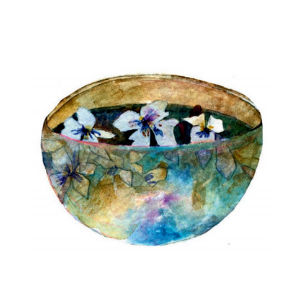
How to Select a Flower Essence
Flower essences can be purchased from a quality producer, or you can make your own. Here, I will discuss how to select and apply ready-made flower essence remedies. You can learn how to wildcraft your own flower essences with me in this video.
When you’re starting out with flower essences, it can be overwhelming—so many producers and so many essences! I like to encourage people to remember that it’s your relationship with the plant that is the most important thing in selection. Your relationship with the remedy is the co-creation with that plant. The more you work with flowers, the more you will be able to feel and trust this part of the process.
The following are some ways to begin exploring flower essences:
- Depending on what issue(s) you’d like to address, begin by taking one to three essences that resonate with you. Many producers offer sets of remedies that have a particular focus. You may want to purchase a set to experiment with, such as the FES’s Range of Light, Delta Gardens’ Protection Set, Alaskan Essences, or the Bach Essences.
- Consider flower essences that invite presence, relaxation, protection, and grounding.
- If you want to study the essences more carefully, consider making flashcards or purchasing the flower cards (Alaskan Essences, FES, and Bach make sets).
- If you’re curious to learn more about how a plant might connect with your ancestry, consider doing some research on how it was used historically.
- Perhaps there’s a flower you’re curious about, or have seen in nature. Ask this plant if it would like to work with you.
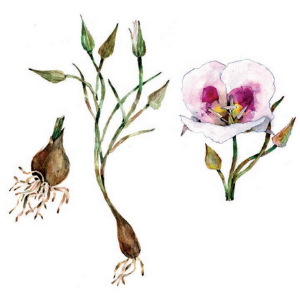
Here are five basic ways to select a flower essence:
- Intuitively: A flower essence might come to you by way of revealing itself in nature, or appearing in a dream.
- By dowsing: Using a tool of resonance, such a pendulum, to test for essences.
- Through muscle testing: A simple way to muscle test is to make a ring with the index finger and thumb of your nondominant hand. If you would like to test for a yes for an essence, say the name of the plant and flick the circle with your dominant hand. If the circle holds, that’s a yes. If it breaks open, that is a no.
- By consulting reference literature: Books, repertories, or flower affirmation cards.
- Through blind testing: By drawing a card or randomly selecting an essence from a set. This method works well with children.
Any of these methods can be integrated into your ritual. Before making remedies for other people, it’s a good idea to spend some time with the flower essences yourself. The flowers will have much to share with you. Also, the more experience you have with the essences yourself, the better you will understand how the essences will work for others.
This is an excerpt from The Bloom Book: A Flower Essence Guide to Cosmic Balance by Heidi Smith.
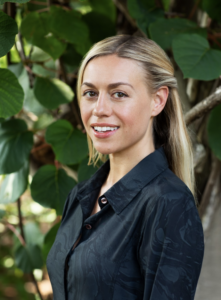 Heidi Smith, MA, RH (AHG), is a psychosomatic therapist, registered herbalist, and flower essence practitioner. Within her private practice, Moon & Bloom, Heidi works collaboratively with her clients to empower greater balance, actualization, and soul-level healing within themselves. She is passionate about engaging both the spiritual and scientific dimensions of the plant kingdom, and sees plant medicine and ritual as radical ways to promote individual, collective, and planetary healing. She lives in Brooklyn, New York, with her partner and two cats. For more, visit moonandbloom.com.
Heidi Smith, MA, RH (AHG), is a psychosomatic therapist, registered herbalist, and flower essence practitioner. Within her private practice, Moon & Bloom, Heidi works collaboratively with her clients to empower greater balance, actualization, and soul-level healing within themselves. She is passionate about engaging both the spiritual and scientific dimensions of the plant kingdom, and sees plant medicine and ritual as radical ways to promote individual, collective, and planetary healing. She lives in Brooklyn, New York, with her partner and two cats. For more, visit moonandbloom.com.
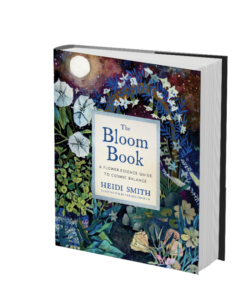
Learn More
Sounds True | Amazon | Barnes & Noble | Bookshop
Two Free Gifts from Adyashanti!
Sounds True is happy to offer two free inspiring teachings from Adyashanti: a special video teaching from Resurrecting Jesus, and an excerpt from Falling into Grace. We hope you find them helpful on your own path of healing and awakening.
Learn more about Adyashanti’s new book Resurrecting Jesus here.
Enjoy!

The Future of Spirituality – audio sessions with Ken Wilber
Have you had a chance to listen to The Future of Spirituality with Ken Wilber and Tami Simon? These historic audio sessions have been edited down into around 6.5 hours and feature a fascinating conversation regarding the evolution of spirituality, the ever-evolving ways the formless is pouring through form, and the always, already awakened nature of consciousness. The sessions are available in CDs or as digital downloads.
If the Buddha, Saint Teresa, or an enlightened shaman walked into the room today, would they find themselves in need of some serious spiritual catching up? The surprising answer, says Ken Wilber, is yes.
Integral evolutionary thinkers today are seeing a burst of accelerating shifts in human consciousness: in our emotional and cognitive lines of intelligence, our creative and moral capacities, our sense of self, and more. And as this landscape of knowledge grows, so does the potential of our own spiritual lives-in ways that even meditation and other inward practices alone cannot provide.
What is the evidence for this upward spiral in our spiritual intelligence? And if it’s true, how do we experience these shifts directly, within ourselves? The Future of Spirituality explores these emerging possibilities to help you discover their profound influences in your own life and in the world around you.
“The enlightened persons of today and of 2,000 years ago are equally free,” says Wilber. But now, for the first time in human history, we have the potential for a far more expansive, fuller spiritual experience than ever before possible. This is the territory that you are invited to explore, with The Future of Spirituality.
Highlights:
“Spirit wants to evolve”-the core of the integral vision
Emptiness and the evolutionary unfolding of form
How science and Western psychology are transforming spirituality
On freedom and fullness
Waking up and growing up, two distinct and essential processes
If the Divine is formless and infinite, who needs levels and hierarchies?
On reincarnation and life after death
The shape of things to come-emerging stages of consciousness ahead

Effortless Mindfulness for Pain Relief
 What Is Pain?
What Is Pain?
Pain is a normal part of human life. And pain hurts. Although pain feels like a threat, pain is not attacking us. Pain is designed to help us survive. Pain and pleasure are signals. Pain is a signal that something is out of balance in your emotional, mental, spiritual, or physical life and that something needs attention. It is meant to be unpleasant, for a good reason: to bring our attention to a potentially dangerous situation until the issue is treated. The sharp, unpleasant signal is designed that way to make sure we drop everything else and attend to the situation immediately. When pain continues unabated after our best healthy efforts to tend to it in a physical way, we look for ways of stopping it, reducing it, or escaping it in any way we can.
For example, if you’re walking barefoot, thoroughly engaged in a conversation with a friend, and you step on a piece of wood and get a splinter, the strong unpleasant pain signal is meant to get you to immediately stop all other interests and attend to the wound. If you had a sharp piece of wood in your foot and it didn’t cause pain, you might not bother to take it out, resulting in infection or worse. Once you take care of the immediate problem, or source, the nature of pain is to eventually go away. Pain by itself is not an entity or an enemy that has any motivation of hurting you. It is an important survival mechanism of our body—a communication tool.
By way of our senses, we have contact with experience in and outside of our body that tends to feel either pleasant, unpleasant, or neutral. We tend to like pleasant sensations, which leads to craving what we like and trying to get more pleasure, and we tend to dislike unpleasant sensations, which leads to rejecting what we don’t like. When that strong craving or rejection happens, there is a contraction of our greater sense of self into a specific identity of “craver” or “rejecter”: we configure our consciousness into a “me” that is a “thinker” or “manager” that has a strategy to get its goals and desires met, and believes that that strategy is real and right. Craving and rejection are a normal part of our physical survival, like craving food when we’re hungry, but they also become our primary source of suffering when they become our identity.
Rather than reacting to the pain, we must treat the underlying condition that is causing pain in order for it to subside. It is important to first check out the cause of the pain in every way possible so as not to ignore, overlook, or deny a potentially dangerous condition. In some types of chronic pain that we know the cause of, like arthritis or sciatica, the nerve signal system is alerting us of an issue, but there’s no splinter to be removed from our back or foot. If we’ve attended to all the medical and alternative diagnoses and treatments, and the pain still persists, we still have the opportunity to learn some approaches using our own consciousness to relate to pain differently. Effortless mindfulness is a wonderful approach that does not in any way attempt to replace or deny diagnosing the cause of pain and working to cure it through any and all means. I am simply sharing this practice as a suggestion of what can be done in conjunction with any medical treatment.
With effortless mindfulness, we can learn to become present with the unpleasant—an important skill that we often avoid learning until we experience inescapable pain. We may already have experienced, through effortless mindfulness, how chattering thoughts recede into background awareness or can be met by open-hearted awareness. The great news is that we can do this with pain signals as well! They can become like thoughts and go into the background of awake awareness. When the pain signals recede to the background or significantly lessen, we no longer have to suffer silently or try to escape the pain through behaviors of shutting down, numbing, addiction, or acting out. By changing how we relate to pain, we can find a doorway to a freedom that allows us to respond to pain from courage and intimacy. We can learn to be present with the unpleasant, remain sensitive without being defensive, and be responsive but not reactive. When the intelligence of awake awareness knows directly that there is no immediate danger, the pain signal can go into the background.
In this video below, join me as I guide you through this practice of using effortless mindfulness to help you be present and work with your pain for lasting relief.
This is an excerpt from The Way of Effortless Mindfulness: A Revolutionary Guide for Living an Awakened Life by Loch Kelly.

 Loch Kelly, MDiv, LCSW, is a leader in the field of meditation and psychotherapy. He is author of the award-winning Shift into Freedom and founder of the Open-Hearted Awareness Institute. Loch is an emerging voice in modernizing meditation, social engagement, and collaborating with neuroscientists. For more, visit lochkelly.org.
Loch Kelly, MDiv, LCSW, is a leader in the field of meditation and psychotherapy. He is author of the award-winning Shift into Freedom and founder of the Open-Hearted Awareness Institute. Loch is an emerging voice in modernizing meditation, social engagement, and collaborating with neuroscientists. For more, visit lochkelly.org.
Buy your copy of The Way of Effortless Mindfulness at your favorite bookseller!
Sounds True | Amazon | Barnes & Noble | Indiebound

Taking the Small Stuff in Stride

Especially during the holidays, it’s helpful to have a good perspective and take things in stride. Here, Lama Surya Das shares some of his favorite remindfulness practices for keeping the big picture in focus:
My own practice for not sweating the small stuff entails utilizing a few homemade quotes and potent slogans that speak to me. I keep yellow sticky notes and index cards on my desk, bathroom mirror, dashboard, wallet, and computer. I practice what I call remindfulness by remembering to look at these handwritten adages; they help me recall what is important in the bigger picture and in the long run — my values, principles, vows, practices, and goals. I let the wisdom of these maxims sink in, inevitably defusing the situation before it gets anywhere near out of hand.
Among these potent pointers, here are my favorite:
- “This too shall pass.”
- This slogan reminds me to practice patience, acceptance, and forbearance in the face of irritation and disappointment. I also remember to stay in touch with the long view, because things are cyclic and nothing happens without causes, even if not immediately apparent to me.
- “How much will this matter to me a year or two from now?”
- I also like to echo the Diamond Sutra, the world’s oldest printed book, which quotes Buddha saying: “See things as like a dream, a fantasy, a mirage.”
- I usually add the word sitcom or movie, just for fun. This traditional Dharma teaching helps me remember to regard everything as like rainbows or the divine dance of illusion. It helps me take things a lot less seriously and leave room for my inner child and little Buddha within to stand up, play, dance, and sing.
Probably the most effective, practical yoga and meditation-related maxim is this:
- “Breathe, relax, center, and smile. Nothing is as important as it seems at this moment.”
- That really cools my jets, and allows for more intelligent decision-making and clear-headed thinking to proceed.
I’ve gotten my friend Amelia into the habit of singing (often in her head) the great nursery-rhyme mantra guaranteed to defuse any difficult situation:
- “Row, row, row your boat, gently down the stream. Merrily, merrily, merrily, merrily, life is but a dream.”
If I have a good amount of time and feel inspired to co-meditate with the Masters for further spiritual relief and sustenance — perhaps when I’m sitting in a waiting room at the airport or somewhere — I either close my eyes and chant Tibetan mantras and prayers to myself, so only my collar can hear it (as Dudjom Rinpoche once advised), or I recite Buddha’s Metta Sutra (Maitri or Loving- Kindness Sermon) which includes the line:
- “May all beings be happy and at ease!”
Or I might take St. Francis of Assisi’s Peace Prayer out of my wallet and read:
- “Make me an instrument of your peace . . .”
I invite you to try my small-stuff slogans out, one at a time, and see how they work for you. Or find other one-liners and make up your own.
Looking for more great reads?
Excerpted from Make Me One with Everything by Lama Surya Das
 Lama Surya Das is one of the most learned and highly trained American-born lamas in the Tibetan Dzogchen tradition. He is the founder of the Dzogchen Center in Cambridge, Massachusetts and Austin, Texas, and the author of many books, including Awakening the Buddha Within. For more, visit surya.org.
Lama Surya Das is one of the most learned and highly trained American-born lamas in the Tibetan Dzogchen tradition. He is the founder of the Dzogchen Center in Cambridge, Massachusetts and Austin, Texas, and the author of many books, including Awakening the Buddha Within. For more, visit surya.org.

